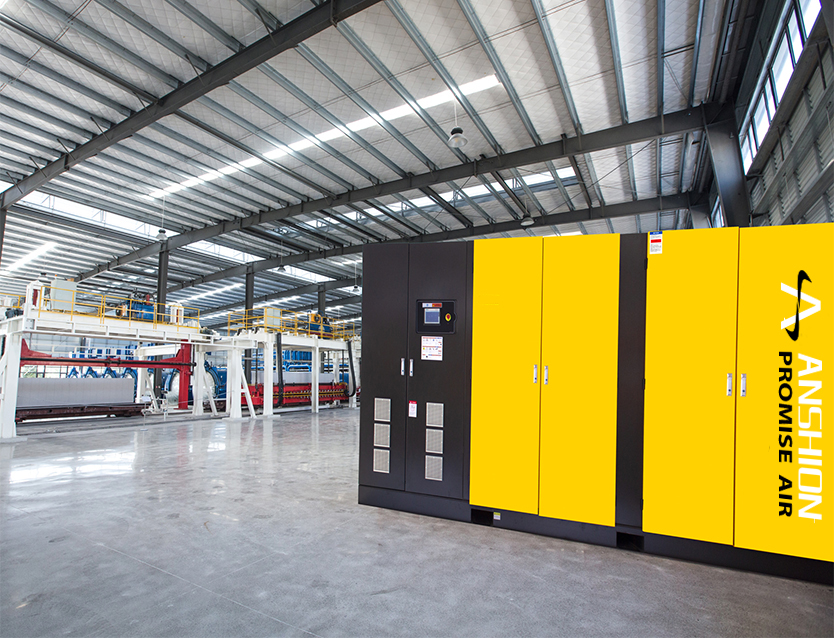2025/2/5 12:01:18
Resources
Notes on Air Compressor Selection
Air compressors are indispensable equipment
in industrial production and are widely used in manufacturing, construction,
medical and other fields. Correct selection of air compressors is essential to
improve production efficiency and reduce operating costs. This article will
discuss the precautions for air compressor selection in detail from the
following aspects to help you make a wise decision.
I Clarify the needs
1. Determine the gas consumption
Gas consumption is a conventional parameter
for selecting an air compressor, usually expressed in cubic meters per minute
(m³/min). When calculating gas consumption, it is
necessary to consider the total demand of all gas-using equipment and leave a
certain margin (usually 10%-20%) to cope with possible future expansion needs
or sudden gas consumption peaks.
2. Determine the gas pressure
Different equipment has different
requirements for compressed air pressure. The common pressure range is between
0.4MPa and 1.25MPa. When selecting an air compressor, make sure it can provide
enough pressure to meet the needs of all gas-using equipment. Generally, the
rated pressure of the air compressor should be 0.1-0.2MPa higher than the
maximum gas pressure.
3. Determine the quality of gas
Choose the appropriate type of air
compressor and post-processing equipment according to the requirements of the
gas-using equipment for the quality of compressed air. For example, the food,
medicine and other industries have high requirements for the cleanliness of
compressed air and need to be equipped with high-efficiency filters and drying
equipment.
II Choose the type of air compressor
1. Piston air compressor
Advantages: simple structure, easy
maintenance, low initial investment.
Disadvantages: high noise, high vibration,
low reliability of continuous operation.
Applicable scenarios: small factories,
laboratories and other occasions with low gas consumption requirements.
2. Screw air compressor
Advantages: stable operation, low noise,
high efficiency, simple maintenance, high reliability.
Disadvantages: high initial investment.
Applicable scenarios: medium and large
factories and other occasions with high gas consumption requirements.
3. Centrifugal air compressor
Advantages: large flow, high efficiency,
stable operation, low noise.
Disadvantages: high requirements for air
quality, high initial investment, and long start-up time.
Applicable scenarios: large industrial
projects, such as chemical, power and other industries.
4. Scroll air compressor
Advantages: compact structure, low noise,
high efficiency, simple maintenance.
Disadvantages: small flow rate, limited
pressure range.
Applicable scenarios: small laboratories,
medical equipment and other occasions with high requirements for noise and
space.
5. Oil-free air compressor
Advantages: compressed air is oil-free and
has high cleanliness.
Disadvantages: high maintenance cost and
high initial investment.
Applicable scenarios: occasions where the
cleanliness of compressed air is extremely high in industries such as food,
medicine, and electronics.
III Consider the operating cost
1. Energy consumption
Energy consumption is the main component of
the operating cost of the air compressor. Choosing an energy-efficient air
compressor can significantly reduce long-term operating costs. You can obtain
energy consumption information by checking the energy efficiency label of the
air compressor or consulting the supplier.
2. Maintenance cost
Different types of air compressors have
different maintenance costs. Piston air compressors are simple but frequent to
maintain, while screw and centrifugal air compressors have longer maintenance
cycles but higher costs. Maintenance frequency and cost should be considered
comprehensively when choosing.
3. Service life
The service life of the air compressor
directly affects its overall cost. Air compressors of high-quality brands
usually have longer service life and lower failure rates.
IV Consider the installation environment
1. Space
The installation of the air compressor
requires a certain amount of space. The installation location should be
reasonably planned according to the size and layout requirements of the air
compressor to ensure that there is enough space for operation and maintenance.
2. Ventilation
The air compressor generates a lot of heat
during operation and requires good ventilation conditions. When choosing the
installation location, the setting of ventilation facilities should be
considered to ensure that the air compressor operates at a suitable
temperature.
3. Noise
Air compressors make noise when they are
running, especially piston air compressors. Low-noise air compressors should be
selected, or sound insulation measures should be taken to reduce the impact on
the working environment.
V Consider safety and reliability
1. Safety devices
Choose air compressors equipped with
complete safety devices, such as overload protection, pressure control, safety
valves, etc., to ensure the safety of equipment operation.
2. Brand and after-sales service
Choosing well-known brands and suppliers
with good after-sales service can ensure the quality of the equipment and the
timeliness of subsequent maintenance. Well-known brands usually have more
complete technical support and spare parts supply.
3. Automatic control
Modern air compressors are usually equipped
with automatic control systems, which can realize functions such as remote
monitoring, fault diagnosis and automatic adjustment. Choosing air compressors
with advanced control technology can improve the operating efficiency and
reliability of the equipment.
VI Consider scalability and flexibility
1. Modular design
Choosing air compressors with modular
design can flexibly adjust the equipment configuration according to actual
needs, which is convenient for future expansion and upgrading.
2. Multiple machines in parallel
For occasions where the gas consumption
fluctuates greatly, you can consider choosing multiple air compressors to run
in parallel, and use the automatic control system to achieve intelligent
scheduling of equipment to improve the flexibility and reliability of the
system.
